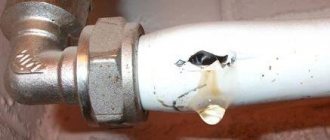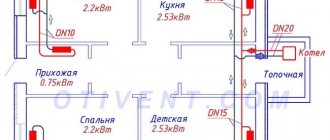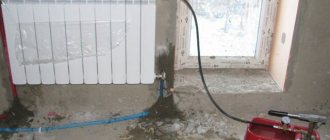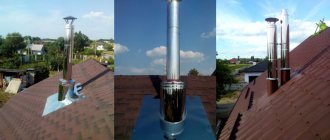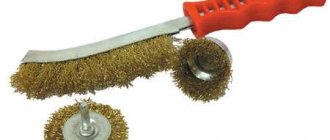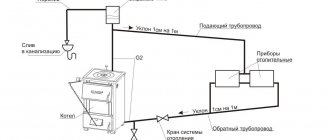How to properly drain water from the system?
How to protect the system from freezing?
It is necessary to drain the water from the water supply in a country house before preserving the system for the winter. Otherwise, almost all elements of the water supply system may suffer from freezing - water supply pipes, shut-off valves, plumbing equipment, etc. Basically, the need to free the water supply system from water is necessary for seasonal, that is, summer residence. In the absence of heating, the house freezes through rather quickly, no matter how thick the walls are. A good example of the power of frost is the ground freezing to a depth of 1.8 m in winter in the Moscow region.
The simplest way to organize the drainage of a water supply system in a country house is well known - to use drain taps. A tee is placed on the pipe through which water is supplied from a well or well, and a drain valve is connected to the tee. A drain valve is also installed at the lowest point of the water supply in the house. Ideally, each branch of water pipes in the house should have a drain valve. How is water drained?
How to properly drain water from the system?
If a summer water supply system was installed on the site and the water rose from a shallow well or well, then in addition to draining the water from the internal distribution system in the house, it is necessary to remove the pump so that the water in the water supply pipe does not freeze. Such simple systems usually do not provide any specialized means for convenient draining. If water is supplied to the house from a well with a caisson, then there is no need to lift the pump from the well - just open the drain valve above the head and the water from the water supply system will return to the well. The drain valve is located between the check valve and the accumulator. During the process of draining water, all taps at water collection points must be open. If there is a storage tank in the house, drain the water from it. Don’t forget about the summer water supply located outside - it will suffer from frost before anyone else.
drain tap in summer water supply
To carry out effective drainage, water pipes must have a certain slope so that all the water is guaranteed to leave the system and not linger somewhere inside. A small amount of water remaining in the pipe and turning into ice can rupture the pipe and break the seal. Even a strong steel pipe will not be able to withstand the pressure of the ice that forms. Water from the water heater is also drained through a drain valve connected to the tee. The tap and tee must have a hose attachment to the check valve on the incoming water heating pipe. Another tee with a tap must be installed on the outlet pipe from the heater to supply air when draining water.
If for some reason the drain taps were not installed when installing the water supply system, and frost is about to hit, then you can remove water from the pipes using a compressor. Getting into the pipes through the tee, compressed air is able to displace all the water out. The compressor can be used even with a drain valve if you want to purge the system and make sure that there is not a drop of water left in it. Air blowing is especially important if the internal water supply in the house is made of hard plastic pipes, which, for the sake of design, are mounted strictly horizontally. In this case, complete drainage from the system is obviously not guaranteed and the use of purging is mandatory.
compressors for purging water pipes
If you live in a country house permanently, and the heating system uses ordinary water rather than antifreeze, then before leaving for a long time in winter, it will also have to be drained so that the heating pipes and radiators do not fail. Of course, for such cases, various complexity and price options have been developed for emergency heating of the water supply system, heating system, or the room as a whole to a temperature of several degrees above 0 C. But all these methods do not guarantee complete protection, because the boiler or other heat source is mainly controlled using electronics, and in your absence the electricity may be turned off. In addition, electric heating equipment constantly turned on in the absence of owners increases the risk of fire. Therefore, the best, cheapest and most reliable protection of the heating system from freezing is the use of antifreeze.
But if it happens that instead of antifreeze, water is used as a coolant, then how to properly drain this water from the heating system? Turn off the boiler or close the distribution valve on the pipe leading from the riser. Close the valve through which water is supplied to the heating system. To drain water from the radiator system, use a hose of the required length to divert the water to a discharge point into the sewer or into the street. Open the drain valve on the radiator, and in the heating system, open the faucet with the air valve - this will speed up the drainage of water.
draining water from an electric water heater
Where else can water remain? Don't forget to drain the water from all siphons (hydraulic seals). There are water seals in every home; they are located in curved sections of the drain pipe under sinks, under bathtubs, and in toilets. Water also remains in the coarse filter, in the main filter unit, in the washing machine and dishwasher and in the electric water heater. Simply put, before closing your dacha for the winter season, check all the devices to which water was supplied in the summer.
All work on draining water and preserving the individual water supply system must be carried out at a temperature not lower than + 5 C.
Connection diagram
Where is the best place to install a hydraulic accumulator for water supply systems?
Depending on the pump used, there are three placement options:
- In the house after the surface pump, if one is installed.
- In a pipeline entering the house when using a submersible pump.
- In a septic tank after the intake pipe, if the system has a low-power submersible pump.
You can install a hydraulic accumulator for water supply systems with your own hands. For installation in a house, a special fitting with five terminals is used (autonomous water supply system for a private house).
Each of them is connected to:
- Hydraulic accumulator.
- Pump.
- Pressure switch.
- Consumer line.
- Pressure gauge.
How to properly connect a hydraulic accumulator for water supply is shown in the figure.
The only optional element is a pressure gauge, without which the system can operate successfully. It can also be installed in another place, for example, on the accumulator fitting where the cylinder is attached.
Having purchased a pumping station, you no longer have the issue of placing elements (how to choose water supply pumping stations for a private house). After all, everything in it is arranged as required. All you have to do is connect the water inlet and outlet, as well as the power supply.
When you have chosen a submersible pump, the connection diagram for the hydraulic accumulator to the pump and water supply system will be as follows.
If installation is carried out in a septic tank, then the following elements are connected to the five-pin fitting:
- Hydraulic accumulator.
- Fence line.
- Pressure switch.
- Water supply main to the house.
- Pressure gauge.
In a septic tank, the water supply scheme for a private house from a well with a hydraulic accumulator looks like this.
For any installation method, it is advisable to install a shut-off valve near the accumulator.
There is no need to try to plug in a hydraulic accumulator after the boiler or in the heating system. Surfing the Internet may give you this idea. Modern boilers and gas boilers do not require additional units. They are not afraid of thermal expansion. If compensators are needed, they are there. The increased pressure is relieved by safety valves.
How to protect the system from freezing?
In addition to being able to drain the water, the system must be protected - at least partially - from frost. Not only a simple drain of water can save an individual water supply system from freezing - modern materials and technologies are at your service. To protect water shut-off valves from freezing of residual water, use faucets with ceramic parts and taps with rubber seals. The most resistant to water freezing are pipes, as we said above, not made of steel, but of low-density polyethylene (HDPE). Flexible plastic can withstand some increase in the volume of internal ice without collapsing, but it is still safer not to test the water supply for strength and remove all water from the water supply system before the onset of cold weather.
pipes with insulation and heating
Lay water supply pipes from the well to the residential building along the bottom of a trench dug to a frost-free depth. This guarantees complete protection of the external water supply system from any frost. The pipes must be sloping towards the water source so that the return flow occurs unhindered. Protect pipes that go to the surface - for example, a short section of pipe from a trench into a house - with a heating cable.
Draining water from the water supply system for the winter will not be difficult if this function is initially included in the design of the external and internal water supply. A technically competent solution to this problem is only possible if the design and installation of pipes for individual water supply are entrusted to professionals.
What needs to be done to empty the storage tank of residual water
It may also be necessary to empty the accumulator of water in the following cases:
- when performing repair work (replacing a membrane that has lost its tightness and/or elasticity)
- if the water supply has not been used for a long time and water has stagnated in the hydraulic tank. The water is drained to fill the accumulator with clean water from the well.
- De-energize the pumping equipment.
- Leave any of the system's water taps open.
- Disconnect the hose supplying water to the storage tank.
If the accumulator is equipped with a drain valve (drain plug), the remaining water can be drained most easily by opening the drain. In most cases, vertical hydraulic tanks are equipped with a water drainage device. If such a valve is not provided for in the design, during installation of the water supply system it is recommended to provide a way to simply disconnect the outlet pipe. An American type connecting fitting is often used.
Installing a new accumulator membrane
If water is detected in the air compartment, urgent measures are taken to replace the membrane. It serves as a fuse between the two main components of the device, the storage and air chamber. To get to the membrane, unscrew the flange with the water supply fitting. The membrane is removed. The tank is dried and a new part is installed.
During installation, sealants are used. They coat the area of contact between the flange and the membrane. This allows you to organize the correct operation of the water supply system, protecting the tank from loss of air pressure through an unprotected joint. After all the work has been completed, the hydraulic accumulator is connected to the water supply and drainage pipes. If the membrane is replaced not before the winter period, the device begins operation.
«>
Water supply system conservation process
In order to avoid problems with the pipeline in the country, you should completely drain the water from the water supply system.
The whole point of the manipulations before leaving your own country house for the cold winter is as follows:
- disconnect the pump from the system;
- drain the liquid from it and store the unit in a warm cellar;
- pump everything out of the pipeline by opening the valves on the lower branches of the system; if there are none, then remove and blow out the pipeline elements themselves;
- dry all plumbing fixtures, it is important that no moisture remains anywhere;
- Disconnect the dishwasher and washing machine and remove the water through the small drain hole.
It is also necessary to preserve the street water supply, while pipes not dug into the ground must be thoroughly blown out with a compressor, and the fittings must be thoroughly dried. Remove the shut-off valves and remove all moisture; if removal is not possible, then simply leave the taps open and move the lever to the half-open position.
When preparing your dacha for winter, be sure to drain all appliances and preserve them. To do this, the water in the house is shut off and all electricity that powers the water heating elements is turned off and the liquid is drained from the toilet tank. It is imperative to check whether the outlet taps of the main water supply route are open.
To ensure that all moisture has been removed from the pipes, dry them using a compressor with a high air flow.
It is easy to properly preserve a well for the winter. After this procedure, it will be ready for work in the spring, and in winter it will not be used; access to liquid in the cold season will be completely blocked. After the water is drained from the heating units, the well is not in danger.
It is necessary to close the mouth: screw on the head that protects from precipitation and close it tightly with an airtight film
Preservation of a well at a summer cottage
In this case, you first need to isolate the entrance to the well shaft. This can be done using an insulated cap; it will reliably preserve the well and protect it from various climatic precipitations.
Preservation of the well for the winter
Preservation of a well that will not be used in winter begins before the onset of frost. It is convenient to carry out operations if the check valve is installed in an accessible place immediately after the pump. Some models of submersible pumps are equipped with a built-in valve.
Conservation of the summer version of the well is carried out in the following sequence:
- Turn off the power supply.
- Open the water tap.
- Expect a drop in pressure in the system. When it reaches 0.5 atm, the automatic valve opens. It is mounted below the soil freezing level on the supply hose.
- Unscrew and remove the control unit.
If the well is equipped with an adapter, the hydraulic tank with automation is located in the house. The pipes are located below the freezing point.
To mothball the well, the pump is disconnected from the electricity and the water tap in the house is opened. When the pressure in the system drops, the valve is activated. Water from the pipeline leading into the house is drained into a well.
If the well is equipped with a caisson, the pumped storage tank and automation are located mainly in it.
Preservation is carried out in several stages:
- Electricity is cut off from the pump. Open the shut-off valve on the pipeline to the house.
- They are lowered into the caisson. Open all the taps, except the one on the riser to connect the watering of the area.
- They wait for the water to drain into the well. Open the watering tap and drain the remaining liquid.
It is not necessary to lift the pump from the well. The temperature in it is above zero, the water does not freeze. Equipment is removed and stored when thieves are feared.
How pressure affects the operation of the station
How to drain water from a boiler
Why are pressure indicators generally important for the functioning of a water station? In order to understand this issue, let’s get acquainted with the structure and operating principles of the unit.
The main component of the station is the pump, thanks to which water is pumped. Its engine has one serious drawback - every time the pump is turned on, it experiences an overload. As a result, when the station is started frequently, the engine quickly becomes completely unusable. To prevent such a negative phenomenon, it is necessary to reduce the number of pump starts - for this, the station is equipped with a practical hydraulic accumulator in which water accumulates.
The pressure to fill the tank with water is created by the force of air. However, this operating scheme does not make it possible to use level sensors, so the switching on and off processes are regulated by the pressure in the water supply. For this purpose, the equipment is equipped with another important device - a pressure switch. As a result, the system functions in this way: as soon as the volume of water in the accumulator drops to a critical value, the pressure drops to a minimum level and the relay turns on the pump, and when the tank is completely filled, the pressure rises to a maximum and the relay turns off the pump.
But sometimes it happens that the pump turns on very often and does not turn off. The reason for this phenomenon is low pressure in the system. Most often, a water station cannot gain the pressure it needs for the following reasons:
- drop in pump power;
- insufficient voltage in the electrical network;
- leaks in the water supply;
- pump airing;
- accumulator problems.
We propose to consider each of these reasons in more detail.
